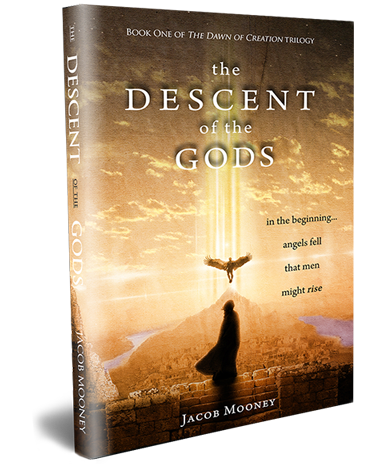
A Strange Prelude to the Flood
In Genesis 6:1–4, just before the flood narrative begins, we read one of Scripture’s most cryptic accounts:
“When man began to multiply on the face of the land and daughters were born to them, the sons of God saw that the daughters of man were attractive. And they took as their wives any they chose… The Nephilim were on the earth in those days, and also afterward, when the sons of God came in to the daughters of man and they bore children to them. These were the mighty men who were of old, the men of renown.”
This passage introduces three puzzling groups:
- Sons of God — beings who took wives
- Daughters of men — human women
- The Nephilim — mighty figures, possibly giants
Let’s explore how this passage has been interpreted throughout history, and why it still captures the imagination.
Who Were the “Sons of God”?
Ancient Jewish Interpretation: Angelic Beings
The most ancient view, found in early Jewish texts like 1 Enoch and supported by early church fathers, is that the “sons of God” were angelic beings who sinned by taking human wives.
1 Enoch 7:2–6: “And they became pregnant, and they bare great giants… who consumed all the acquisitions of men. And when men could no longer sustain them, the giants turned against them and devoured mankind.”
This “angel view” is bolstered by the term bene elohim, which in Job 1:6 and 38:7 refers to heavenly beings.
Josephus, writing in Antiquities 1.3.1, echoes this:
“Many angels of God accompanied with women, and begat sons that proved unjust… for the tradition is, that these men did what resembled the acts of those whom the Grecians call giants.”
This understanding was dominant for centuries, though it raised theological questions about angels having physical form.
The Sethite View: Godly Men and Ungodly Women
From the 4th century onward, particularly through Augustine, a new interpretation emerged: the “sons of God” were men from the godly line of Seth, and the “daughters of men” were from the line of Cain.
This reading makes the passage about spiritual compromise—believers marrying unbelievers—and avoids supernatural elements.
Modern ministries like Answers in Genesis lean toward this view, citing consistency with other biblical teaching and skepticism toward extra-biblical stories.
The Royalty View: Tyrant Kings
A third view, found in some scholarly circles, holds that “sons of God” referred to ancient kings or nobles who abused their power, took multiple wives, and helped drive the world toward destruction.
This interpretation has cultural parallels in ancient Mesopotamian texts where rulers are described as divine or semi-divine. However, it has less textual support within the Bible itself.
Who Were the Nephilim?
The term Nephilim appears only twice in the Bible—here in Genesis 6, and again in Numbers 13:33, where the Israelite spies report:
“We saw the Nephilim there (the descendants of Anak come from the Nephilim); and we seemed like grasshoppers in our own eyes.”
Meaning and Interpretation
The word Nephilim is often linked to “giants,” but its Hebrew root may imply “fallen ones.” They are described as “mighty men of old, men of renown,” suggesting both strength and lasting fame.
Modern commentators differ:
- Some see the Nephilim as literal giants—possibly hybrids of angelic and human union.
- Others believe the term was later used to describe any fearsome or legendary warriors.
- Some interpret the reference in Numbers as exaggeration by the spies, not a literal lineage.
Did the Nephilim Survive the Flood?
Genesis implies a global flood that destroyed nearly all life—yet Numbers 13 refers to the Nephilim again. How?
Options include:
- Some Nephilim survived, perhaps through Noah’s daughters-in-law.
- The name Nephilim became a label for other warrior clans like the Anakim or Rephaim.
- Or the spies’ report was emotionally exaggerated.
This tension remains unresolved but keeps the mystery alive.
Why Does Genesis Say So Little?
Genesis 6:1–4 reads like a condensed legend. Why so brief?
The answer may lie in the author’s intent: to clarify the origin of ancient stories—not to expand on them. The focus is on human sin and God’s response. But by including this passage, Scripture affirms a real history behind the myths.
Cultural Echoes and Enduring Fascination
From ancient Greek heroes to Marvel films, the idea of demigods—half-divine, half-human—has always captured imaginations.
“Today, the Nephilim appear in everything from video games to fringe YouTube theories. But the Bible’s treatment is far more restrained—and far more serious.”
The Genesis account doesn’t indulge in myth for myth’s sake. It points to a world descending into chaos—moral, spiritual, and cosmic.
Why Churches Avoid This Text
Many churches shy away from Genesis 6:1–4. It’s difficult. It raises questions modern theology often avoids:
- Do angels have physical form?
- Is there spiritual rebellion behind human evil?
- How does the unseen realm affect our world?
But that discomfort is precisely why this passage matters.
Author and Sources
Written by: Jake, biblical researcher and storyteller with a focus on ancient cosmology and the supernatural worldview of Scripture.
Primary Sources:
- Genesis 6:1–4; Numbers 13:33
- 1 Enoch 7
- Josephus, Antiquities 1.3.1
- Commentaries: Tim Chaffey, Tim Mackie, Answers in Genesis
Methodology: This article draws from canonical Scripture, Jewish tradition, Second Temple literature, and modern biblical commentary to clarify the meaning and implications of the Nephilim story.






